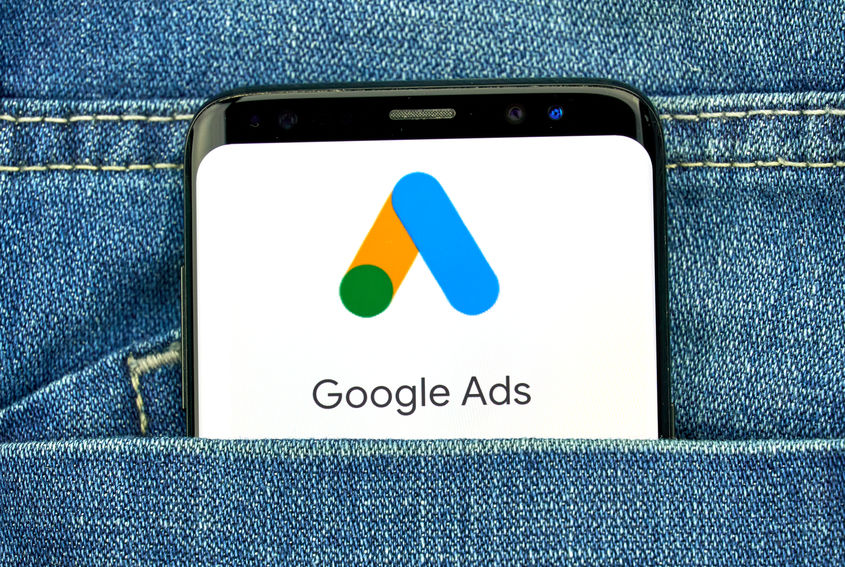
It’s written about a lot and searched for even more (approx 2.7 million times a month according to Google) and generally when something gets written about over and over, searched for over and over, you can bet it’s because it’s not only beneficial, but because people are struggling with it as well. Such is the case with Google Ads and the struggles and wins which ensue.
Google ads are the way of the online marketing world, everyone’s doing it…but not everyone is having tremendous success with it. It’s not complicated to do, just complicated to understand how to do better.
Here are 4 pitfalls and how to not fall into them.
KEYWORDS
There are many elements to the overall umbrella of keywords when it comes to Google Ads. Proper selection, Negative Keywords, and utilizing Keywords in your ad copy. So imagine if you’re not doing all three? It wouldn’t be hard to understand why your ads aren’t succeeding. But it’s far more the norm than one might think.
Proper keywords, whether it’s short tail, long tail, product defining, customer defining, intent, or GEO targeting, keywords are imperative to the success of any online campaign (frankly, any online activity!). One must do their homework.
Likewise, with negative keywords, in fact, maybe MORE important. If you can imagine, if your keywords aren’t up to snuff, but ok, you’ll likely get some movement and hit a few quality conversions. But if your negative keywords aren’t in place or sufficient, it’s going to cost you, dearly. You might get the search success based on your keywords, but simply put, if that person is searching and looking for free, and you don’t do free…you’re emptying out your pockets on a total flop. The click happens, it’s paid for, and there was never ANY hope of a conversion. And all could have been saved through the utilization of negative keywords. They are tremendously important for optimizing your ads and ensuring you’re paying for the right clicks.
Both keywords and negative keywords should be regularly monitored, adjusted and added to. It’s through regular maintenance of both that maximum optimization is going to occur.
Adding keywords to your copy makes it highly more likely your ads will be clicked on. When people search, they want to see a result containing the wording they searched for, quickly. If it’s not there, it will be passed over. Keeping keywords in line with the intent of the ad, building leads or targeting buyers, will also make the difference in conversion success. If someone is searching ‘how’ they don’t want to be taken to a page on ‘where’. They aren’t at that point yet and will very likely click away in further search for what they are actually there to find. Opportunity lost.
LOCATION
It’s not a needle in a haystack, but if you’re not using location targeting at all in your campaigns, you might be missing out. The idea is relatively obvious for a location-based business (and if it’s not, it needs to be number one on your task list today!) but for more globally scaled companies it’s sometimes not instinctual. As an example, your business is clothing, all types, and you’re promoting your new winter line. It might be worthwhile targeting only the locations in the country where a) winter actually comes and b) winter is going to come sooner. You might have success in selling these products everywhere eventually, but geo-targeting the campaign in the early stages to the people who are ready to buy now makes far more sense.
LANDING PAGES
The two words that are discussed and written about (even in my own experience) again and again. The importance of relevant landing pages is something that I don’t think can be stressed enough when talking about any strategy in online marketing. Whether it’s PPC, SEO or an all-encompassing Omnichannel marketing strategy.
Relevant landing pages are what will determine so many things. ‘You only have 8 seconds to make an impression.’ (Interactive Marketing) so your landing page better be clear, concise and completely relevant to the ‘offer’ that brought the person there.
Sometimes, in a desperate attempt to get as much out of your ad clicks as possible, some might think that sending potential customers to your overall homepage, to see ALL you have to offer, is going to sweeten the pot and encourage conversions. But the danger, and likeliness is that people will land there, only to be confused and have to search again for that item, which no one wants to do. They will very quickly navigate away in search of exactly what it is they’re looking for.
If you’re going to go to the effort of creating great ads, relevant keywords, beautiful targeting…they have to be directed to a landing page with the same qualities. No one wants to finally find that eBook they’ve been searching for only to get directed to a homepage where they have no idea where to find it. They want to click the ad and then, quite literally, have the information, offer, and specific details presented with the same relevance and consistent content that the ad displayed. ‘More landing pages means more conversions!’ (Hubspot)
AUTORESPONDER
Maybe obvious, but to some, maybe not, if people are going to click through your ads, sign up for what you’re offering, or even buy from you, you need to, with 100% surety, respond to them. The name of the game is not ‘he who has the most leads wins’ and that’s it. If not engaged and communicating with those leads, those ‘wins’ will very quickly become losses. And possibly costly ones. Besides, thinking that responding and thanking people for their interest is going to happen without a hitch manually is not very effective foresight! It won’t! We’re human, and if your campaign is operating successfully and rapidly, communication back to your audience will get lost in the shuffle.
Setting up your correspondence to trigger automatically the minute someone purchases something or fills in a form, ensures they are being treated like a valued customer right from the start. It also allows you the opportunity to possibly send additional information, offers, or promotions that could turn them into an even more profitable conversion, instantly, if not down the road.
Buyers today want a ‘personalized experience’ at every part of the buying cycle. They want to know that their business is appreciated and that you are looking out for them by providing value-added services, or just a simple thanks! Autoresponders ensure this happens, every time, for every potential customer, and every engagement.
None of these elements to bettering your Google advertising efforts are rocket science. Other things like split-testing, measuring and analysis, and establishing very detailed goals can be far more arduous. To get started with a few simple tweaks that can have a great influence on your effectiveness, profitability, ROI, and campaign success, take a look at how you’re performing in these areas and make some changes that will positively impact on your bottom line.

